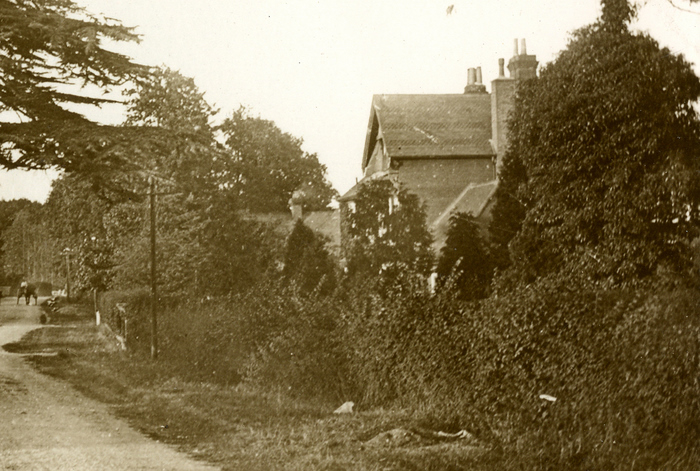Coleshill Lodge was built about 1895 for Mary Jane Jarvis, who originally called the house Nosseghem. In 1907, the owner was Arthur Roger Rowden, but by 1910, he had a tenant, Frederick John Allen, who called the house Coleshill Lodge. Later tenants included George Francis Blake, H.E. Peter Dyke Acland, Charles Frederick Holland and Gladys Rae.
In 1939, Coleshill Lodge became the war-time offices of the Railway Clearing House, which had moved out of London with a staff of about 100. Various temporary buildings were erected in the grounds, including hutted accommodation, a canteen and some very extensive air raid shelters. The newcomers entered into the life of the village, attending whist drives and amateur dramatics. Some of them even settled in the village. When the Railway Clearing House left in 1947, Coleshill Lodge was purchased by Mrs Wycliffe-Taylor, then living in the house later known as Walnut Tree. She divided Coleshill Lodge into flats, one of which was rented by her grandson, Peter Helps. One of the huts, which had accommodated Railway Clearing House staff, was converted by Maurice Greenfield into a bungalow called Chestnut Cottage. The former chauffeur's cottage, along with a single-storey canteen block, was purchased by the estate agent Jack Adams. He sold the canteen to Andrew and Oriel McLatchie, who converted it into a house called Walled Acre. Andrew McLatchie was a director of a printing firm based in the old malthouses in Amersham. He later added first floor bedrooms to his house, with a mansard roof somewhat like that at Walnut Tree. Mrs Wycliffe-Taylor sold some of the grounds of Coleshill Lodge to Maurice Weller, who built several houses on the land in the 1950s.

